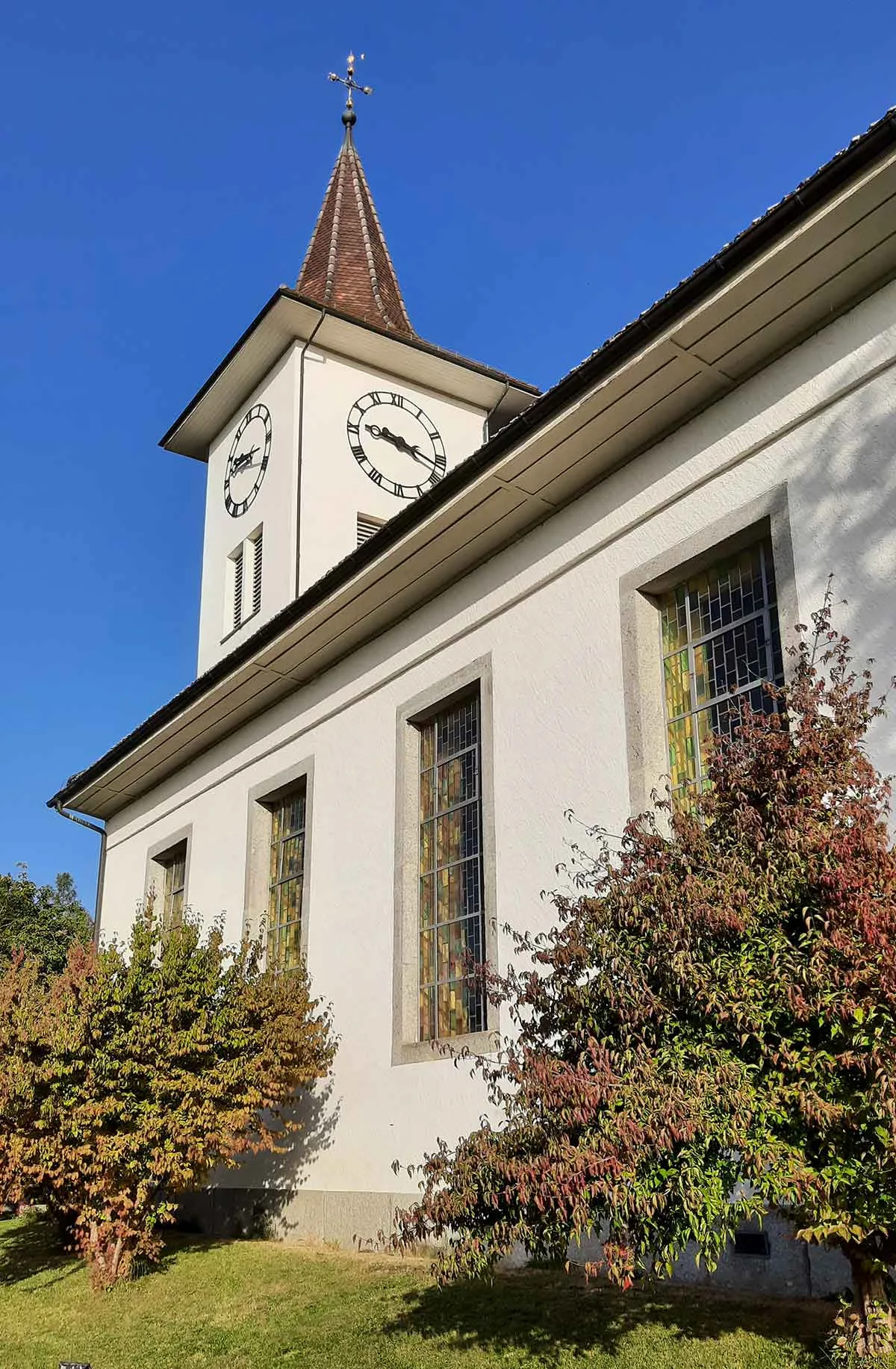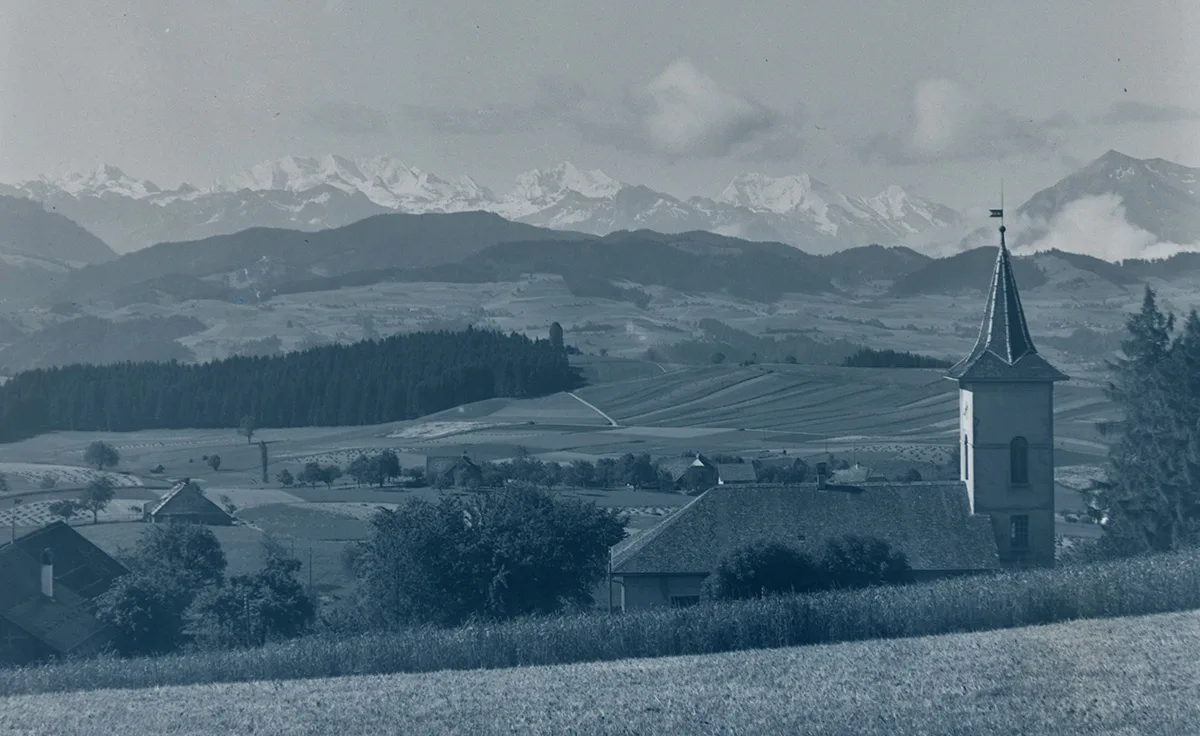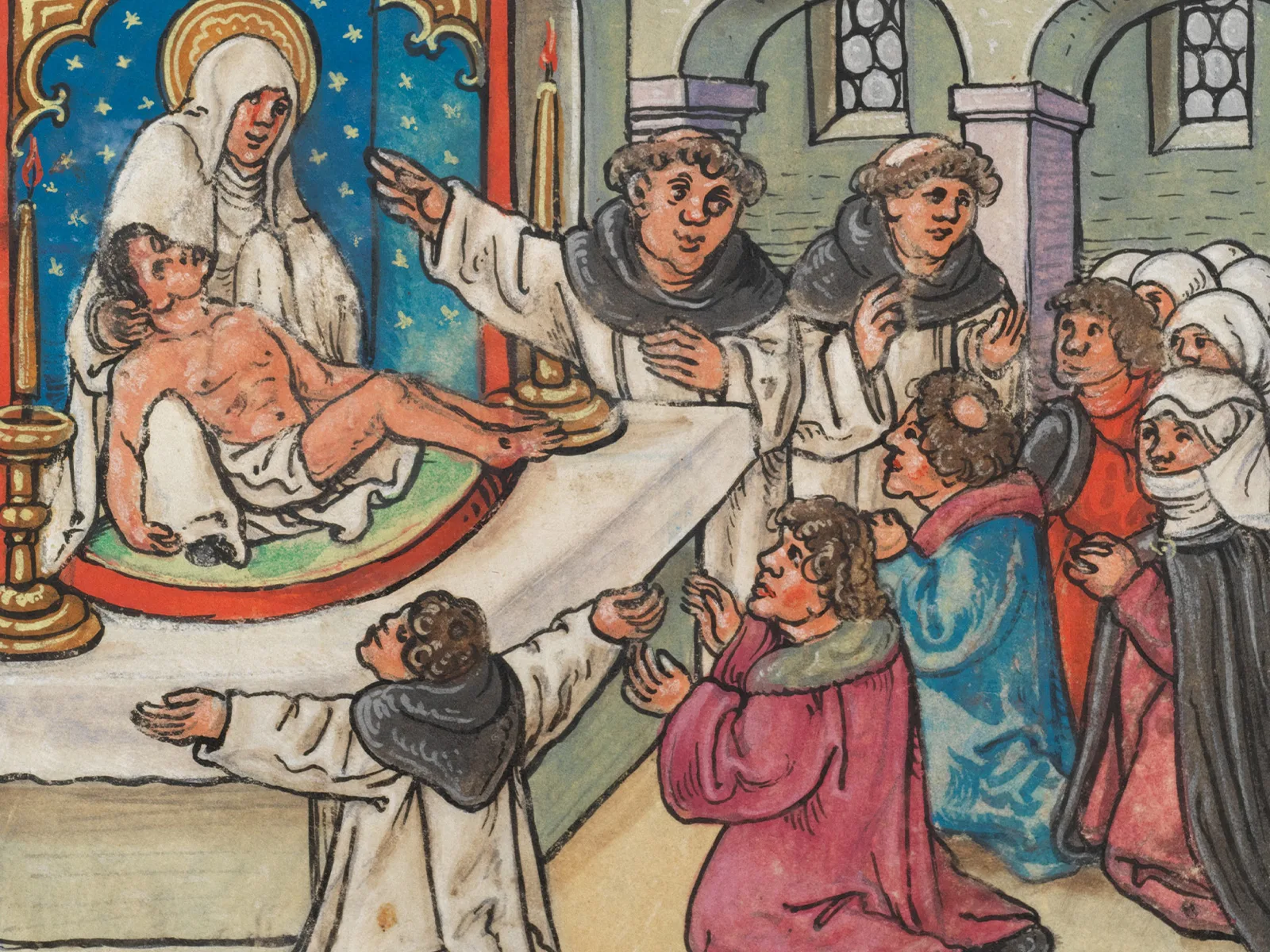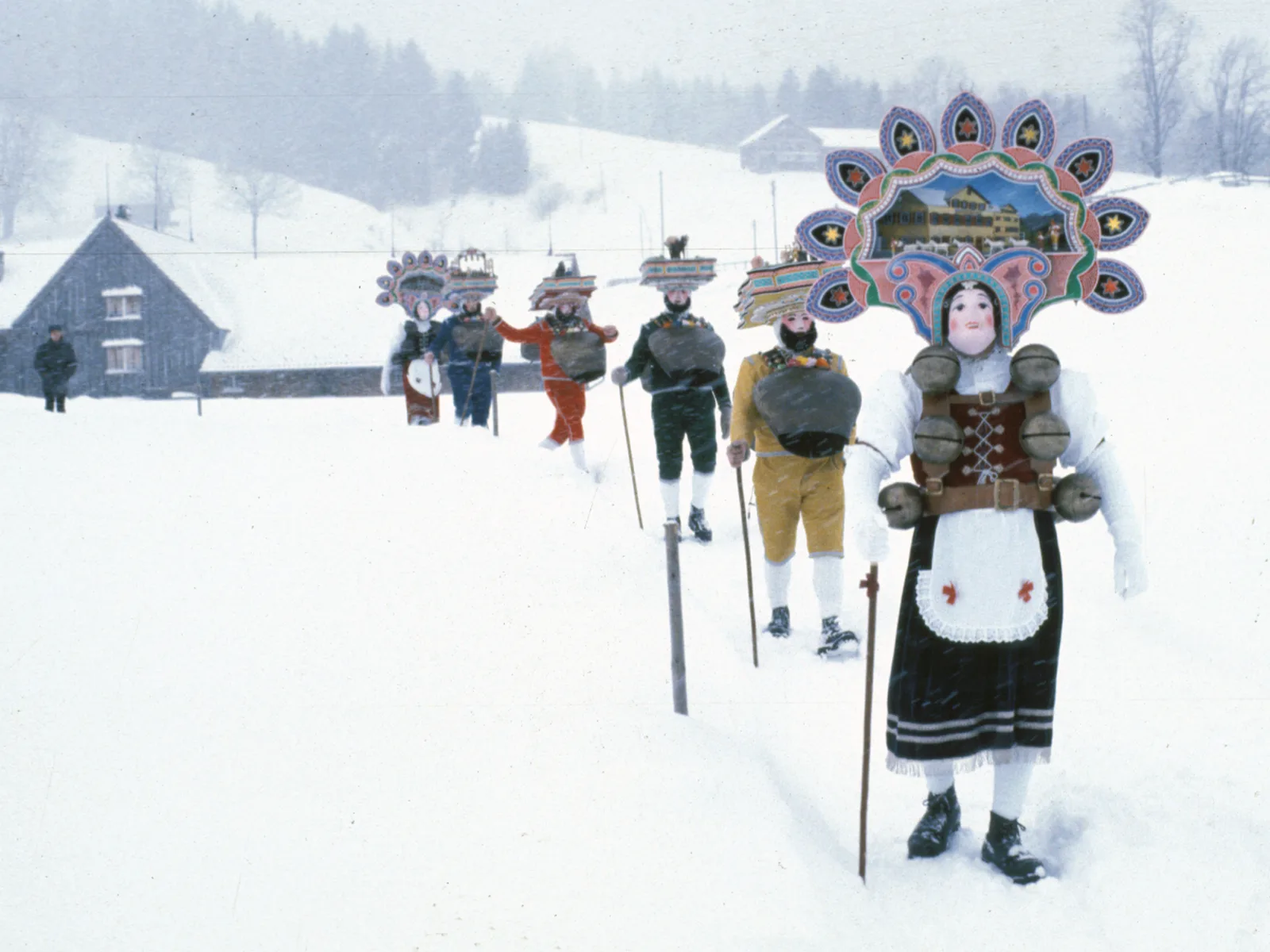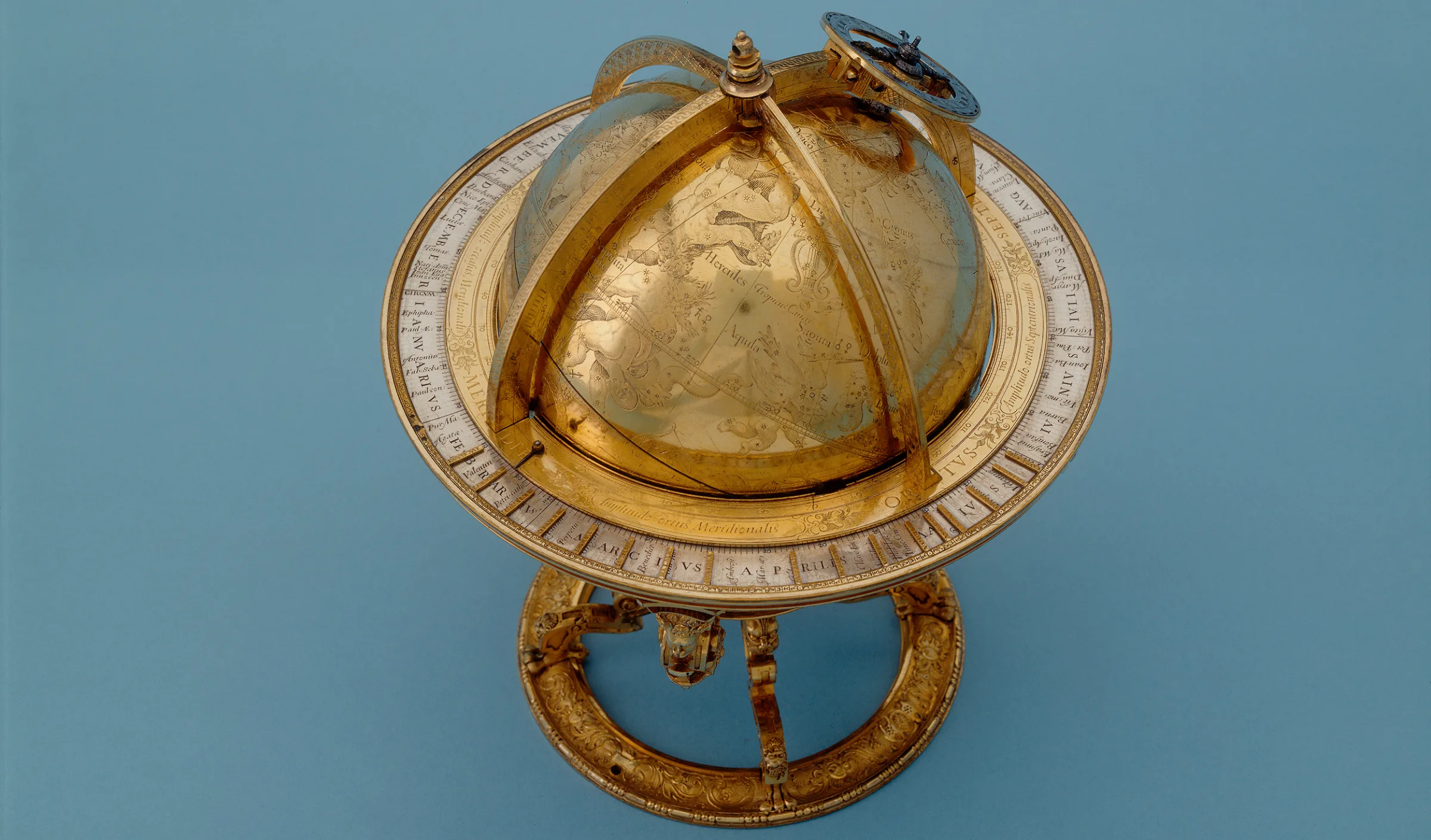
The long road to church
Religion and the church used to be prominent in people’s lives. Church attendance was nigh on obligatory. For rural folk, the ‘Predigtgang’ (the journey to church) often involved a long walk, as was the case for the inhabitants of Buchholterberg.
It was therefore understandable that the idea of Buchholterberg having its own church became a recurring theme, as shown by various petitions sent to the councillors in Bern. From 1712, the pastor of Diessbach had an assistant who took the Sunday school in Bruchenbühl schoolhouse on Buchholterberg. Some years later, the idea of building a cemetery near the schoolhouse started to be mooted. During the winter, it was very hard to bring the deceased through the snow to Diessbach cemetery. Baptisms were also something of an ordeal in winter. Sometimes, the babies didn’t even survive the long hike to the church in Diessbach.
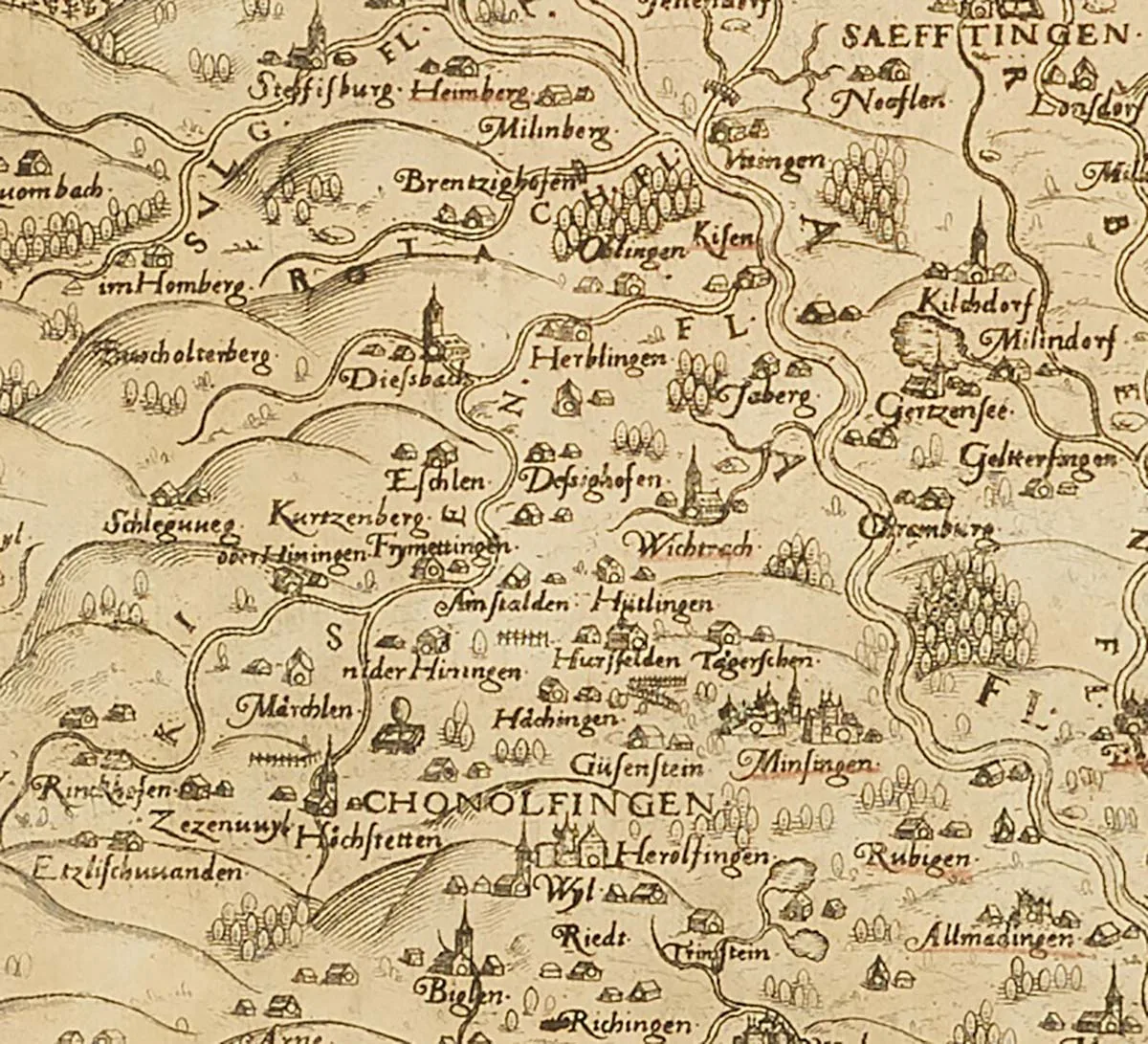
“The areas […] around Buchholterberg are the wildest and most barbaric in the whole region, so I think that if there is a place where we should focus on developing an existing desire to improve morality, it must be there.”
On 15 May 1835, the Cantonal Parliament in Bern finally approved the construction of the church. A suitable site had been located four years earlier in a hamlet called Heimenschwand. For budgetary reasons, it was decided to proceed with a project for a simple box construction with seating for 720 people at a price of 13,799 Swiss francs. Stones and sand from the region were used for the construction, while the window, door frames and base were cut from two large boulders, which had moved from the Grimsel area to Buchholterberg during the last ice age. The locals also played a part in the construction. However, as funds were in short supply – Buchholterberg was one of the canton’s poorest areas at the time – their contribution took the form of labour.
